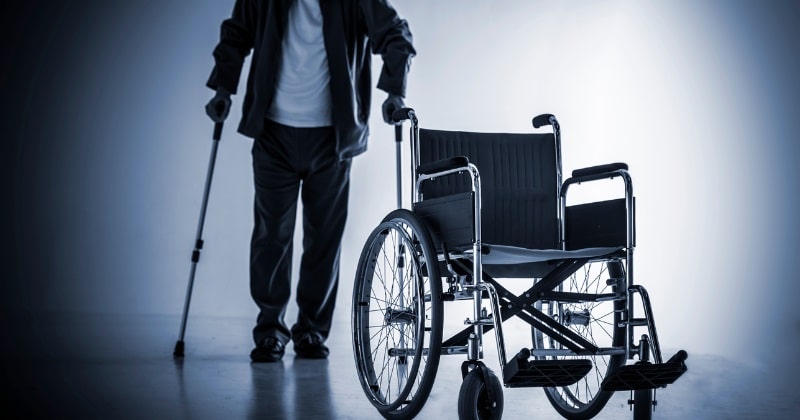Vascular diseases encompass a range of conditions affecting the veins, arteries, and lymphatic systems. Hypertensive vascular disease, blockage of arteries or aneurysms can significantly impact the daily life of veterans and may be service-connected, leading to eligibility for VA disability compensation.
VA Ratings for Peripheral Vascular Disease and Peripheral Artery Disease
Peripheral Vascular Disease (PVD) and Peripheral Artery Disease (PAD) refer to the narrowing or blockage of arteries and veins outside of the heart and brain, most commonly affecting the legs. These conditions can lead to pain, cramping, and even severe complications like gangrene if left untreated.
The VA rates Peripheral Vascular Disease and Peripheral Artery Disease under Diagnostic Code 7114. Ratings are based on the severity of symptoms and the impact on blood flow. Common ratings include:
- 20% Rating: Claudication on walking more than 100 yards, diminished peripheral pulses, or ankle/brachial index (ABI) of 0.9 or less.
- 40% Rating: Claudication on walking between 25-100 yards, trophic changes (such as skin or nail changes), or ABI of 0.7 or less.
- 60% Rating: Claudication on walking less than 25 yards, persistent coldness of the extremities, or ABI of 0.5 or less.
- 100% Rating: Ischemic limb pain at rest, or deep ischemic ulcers.
Agent Orange Exposure: PAD may be connected to Agent Orange exposure, particularly in cases where veterans served in areas where this herbicide was used. Veterans with PAD who were exposed to Agent Orange may be eligible for presumptive service connection.
VA Rating for Hypertensive Vascular Disease
Hypertensive Vascular Disease is a condition where high blood pressure leads to complications in the vascular system, including the arteries, veins, and capillaries. It can increase the risk of stroke, heart attack, and other cardiovascular issues.
This condition is often linked to other vascular diseases, such as PAD, and may be considered for secondary service connection.
VA Ratings: The VA rates hypertensive vascular disease under Diagnostic Code 7101. The ratings for this condition depend on the level of blood pressure control:
- 10% Rating: Diastolic pressure predominantly 100 or more, or systolic pressure predominantly 160 or more, or a history of diastolic pressure predominantly 100 or more requiring continuous medication.
- 20% Rating: Diastolic pressure predominantly 110 or more, or systolic pressure predominantly 200 or more.
- 40% Rating: Diastolic pressure predominantly 120 or more.
- 60% Rating: Diastolic pressure predominantly 130 or more.
Get Help With Your VA Disability Claim
Other Vascular Conditions
Arteriosclerosis
The VA rates arteriosclerosis under several diagnostic codes, depending on the specific arteries affected and the severity of the condition. Veterans with service-connected arteriosclerosis may receive ratings that reflect the extent to which the condition impairs blood flow and overall health. Find out more about arteriosclerosis VA ratings.
Aneurysms
This condition is rated under Diagnostic Codes 7110 (aortic aneurysm) and 7111 (aneurysm of any large artery other than the aorta).
- 100% Rating: for an aortic aneurysm, until six months after surgery, then the rating is based on residuals.
- 60% Rating: for an aneurysm of a large artery other than the aorta, with a risk of rupture, surgery is recommended.
They may also be secondary to conditions such as hypertension, which could be service-connected.
Raynaud’s Syndrome
This condition can be severely debilitating, particularly in colder climates. Raynaud’s Syndrome is rated under Diagnostic Code 7117:
- 10% Rating: Characteristic attacks occurring one to three times per week.
- 20% Rating: Characteristic attacks occurring four to six times per week.
- 40% Rating: Characteristic attacks occurring at least daily.
- 60% Rating: Two or more digital ulcers plus characteristic attacks.
- 100% Rating: Two or more digital ulcers plus autoamputation of one or more digits and characteristic attacks.
Varicose Veins
Veterans may develop varicose veins due to prolonged standing, heavy lifting, or other physical activities during military service. The VA rates them under Diagnostic Code 7120:
- 10% Rating: Intermittent edema of the extremity or aching and fatigue in leg after prolonged standing or walking, with symptoms relieved by elevation of extremity or compression hosiery.
- 20% Rating: Persistent edema, incompletely relieved by elevation of extremity, with or without beginning stasis pigmentation or eczema.
- 40% Rating: Persistent edema and stasis pigmentation or eczema, with or without intermittent ulceration.
- 60% Rating: Persistent edema or subcutaneous induration, stasis pigmentation or eczema, and persistent ulceration.
- 100% Rating: Massive board-like edema with constant pain at rest.
See our article for more detailed information on VA ratings for varicose veins.
Case Examples for Vascular Diseases
Example 1: Peripheral Artery Disease and Agent Orange Exposure
In this example, the veteran served in Vietnam and was exposed to Agent Orange. Post-service, he developed PAD, leading to severe pain and restricted mobility. Initially denied service connection, the veteran appealed, providing medical evidence linking his condition to his exposure. The Board of Veterans’ Appeals (BVA) granted service connection under the presumption that Agent Orange exposure contributed to the development of his PAD.
Outcome: The veteran received a 60% disability rating based on the severity of his symptoms and the impact on his quality of life.
Example 2: Hypertensive Vascular Disease and Secondary Conditions
In this case, the veteran had a long history of hypertension, which led to the development of arteriosclerosis and an aortic aneurysm. The veteran sought service connection for both the hypertensive vascular disease and the secondary conditions. The BVA recognized the link between hypertension and the subsequent development of vascular diseases, granting service connection for all conditions.
Outcome: The veteran received a combined disability rating of 100% due to the severe impact of the aneurysm and arteriosclerosis on his health.
Hypertensive vascular disease can have a profound impact on a veteran’s life. Providing thorough medical evidence and understanding the rating criteria for vascular conditions can significantly improve your chances of receiving an accurate disability rating.




